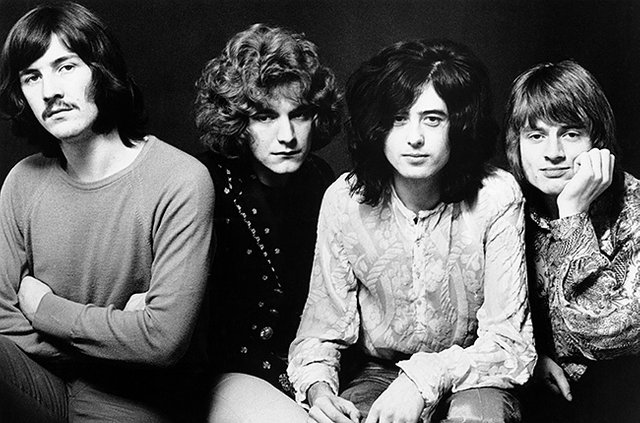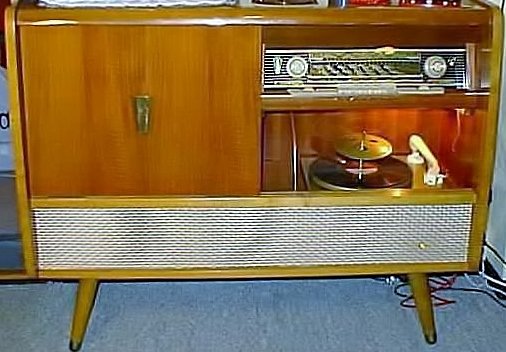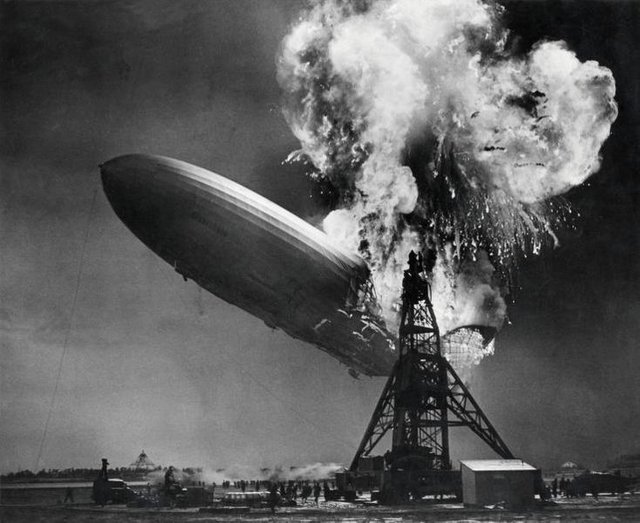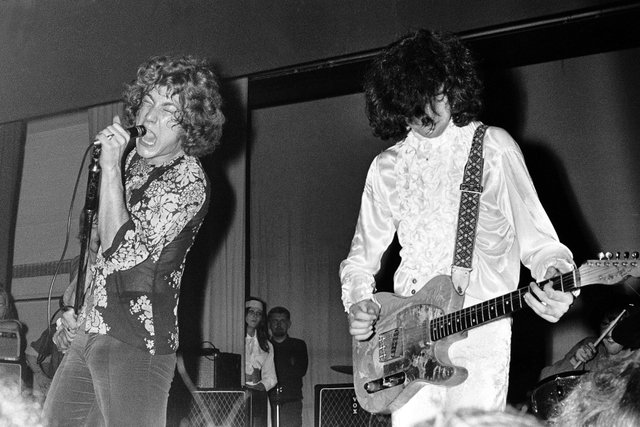Led Zeppelin: Part 1, The Making Of
Led Zeppelin became “The biggest band in the world”. In this series, we'll look at the band and their music.

John Bonham, Robert Plant, Jimmy Page and John Paul Jones, 1968. Image source
Coming of age
My love affair with Led Zeppelin started in 1969. I remember it clearly. My mother, older brother and I were driving back on a shopping trip, along a dirt road in the countryside. My brother had commandeered the radio—at a volume clearly not to my mother's liking—when suddenly a whole new sound came out the tinny speakers. “That's the song!”. exclaimed my brother. “Led Zeppelin. Whole Lotta Love."
It was the song. The album was soon purchased and it was played often and loudly on our “radiogram” (does anyone still remember them?) until we were banished to listen to it in our room on a portable record player. 'Cause it was LOUD. And HEAVY.

A Blaupunkt Radiogram similar to ours. Image source
The next year my brother was called up to do his military training and I was left with his stack of LPs, one of which was the first Led Zeppelin album, commonly referred to as Led Zeppelin I. I soon started playing it more than any other record and remains a favourite to this day.
Avalanche of sound
And the albums kept flowing. It seemed that each new album was better than the last. All of them are distinctively Led Zeppelin but there is no sameness. Each album has a highly creative mix of blues, blues-rock, hard rock, psychedelic, folk and even eastern sounds, brilliantly performed by one of the greatest rock quartets ever put together:
- Robert Plant – lead vocals, harmonica, percussion
- Jimmy Page – guitar, backing vocals
- John Paul Jones – bass, keyboards, mandolin, backing vocals
- John Bonham – drums, percussion, backing vocals
For a year-or-two I thought Led Zepp was an American band, only later to find out they were British. What did I know—I was very young then.
In the beginning
So how did this band, Led Zeppelin, come about?
Firstly, the name.
In 1968, Jimmy Page—co-lead guitarist for the Yardbirds—wanted to form a supergroup with other musical luminaries: fellow Yardbirds guitarist Jeff Beck, and both Keith Moon and John Entwistle from The Who. Ex-Yardbirds guitarist and singer Eric Clapton had left to form the famous supergroup Cream two years earlier in 1966, so that was probably where the idea came from.
But the plan didn't work out. Moon and Entwistle thought a supergroup with Page and Beck would “go down like a lead balloon”—in other words, a disaster. “Lead Balloon” eventually morphed into Led Zeppelin.

The Hindenburg Zeppelin going down. Image: WikiCommons
However, there is a recording of Jeff Beck (lead guitar), Jimmy Page (12-string rhythm) and Keith Moon (drums) playing together in 1966, joined by session musician John Paul Jones (bass) and Nicky Hopkins (piano). It's an instrumental piece written by Page, called “Becks Bolero”.
The piece is notable for its bolero rhythm and the change of pace halfway through, urged by Beck because he thought it was getting too tedious, accompanied by a yell from Moon, and then the ending guitar piece done backwards.
The Yardbirds were breaking up and had a few concert obligations, so it was decided that Page should get a few other members together for the tour, as the New Yardbirds.
The Yardbirds, 1966. From left: Jeff Beck, Jimmy Page, Chris Dreja, Keith Relf and Jim McCarty. Image: WikiCommons
Page wanted Terry Reid as the singer but he declined, instead suggesting a young singer named Robert Plant who was part of the group Band of Joy. Plant accepted and suggested that fellow Band of Joy member, John Bonham, join as the band's drummer. John Paul Jones enquired about joining and got the job.
The New Yardbirds performed their first concert on 7 September 1968. Almost immediately they started working on material for their first album.

Robert Plant and Jimmy Page performing with the New Yardbirds, 1988. Image source
By the time they came back to London from their tour, they were in a position to record their first album. While recording, however, they got a cease-and-desist letter from Chris Dreja of the Yardbirds, so they changed their name to Led Zeppelin.
The album was based on their live set. So by the time they entered the studio, it was well-rehearsed and arranged. So it only took them 36 hours of studio time to record and less than £2,000 to complete. Page picked up the tab.
At the time of recording their first album, Plant was 20, Page 24, Jones 22 and Bonham 20. So young!
In November they signed a remarkable contract with Atlantic Records. Their manager, Peter Grant, secured a $143,000 advance contract which was then the biggest deal of its kind for a new band. No Atlantic executive had even set sight on them. The band was given full autonomy in deciding when they would release albums and tour. They had the final say over the contents and design of each album. And they would decide on how to promote each release and which tracks to release as singles.
Was it a huge gamble from Atlantic? Probably not, after listening to their newly recorded album. But more on that on the next part.
This series on Led Zeppelin will be continued in Part 2.
References:
Rolling Stone: How Led Zeppelin Came to Be
Wikipedia: The Yardbirds
Wikipedia: Led Zeppelin
Also posted on Weku, @tim-beck, 2019-01-20